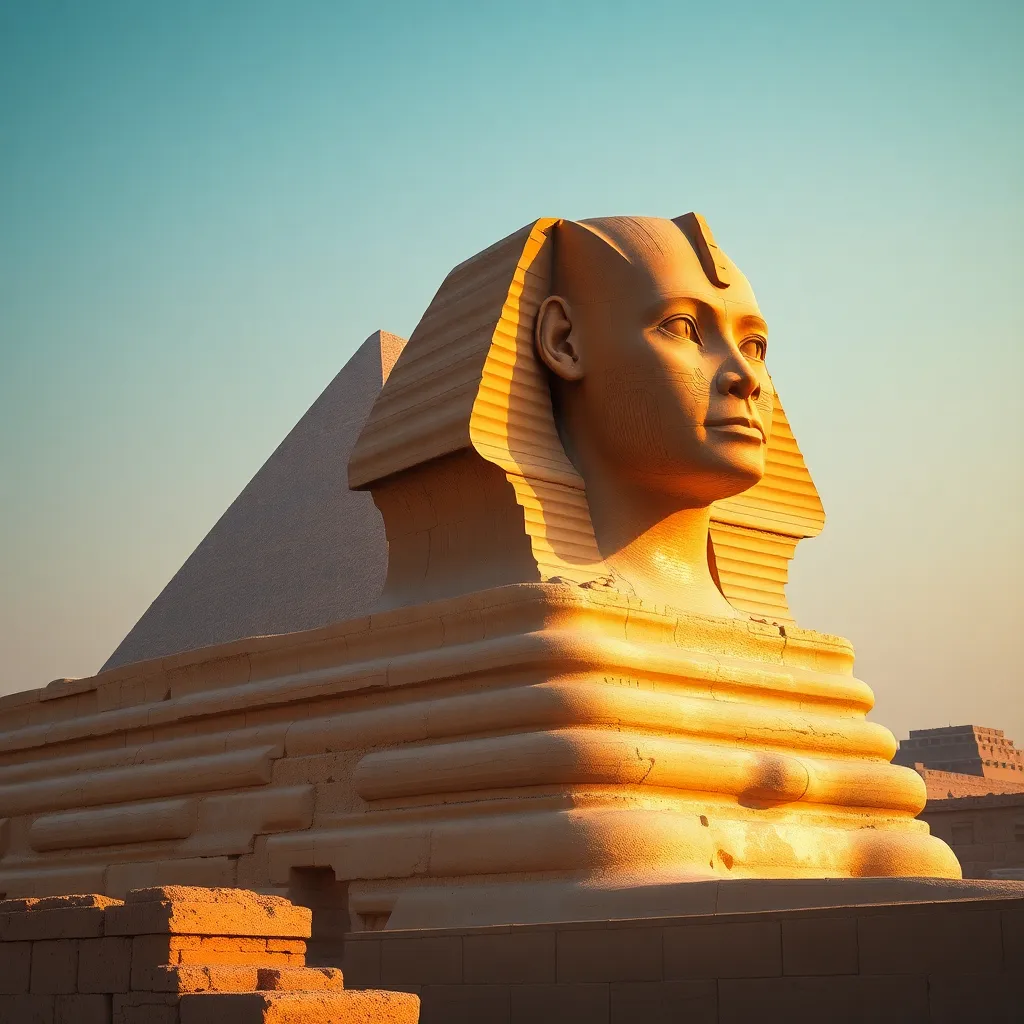The Sphinx of Giza: Guardian of the Necropolis
I. Introduction
The Great Sphinx of Giza stands as one of the most iconic symbols of ancient Egypt, representing a remarkable blend of art, architecture, and mythology. This colossal limestone statue, with the body of a lion and the head of a pharaoh, has captivated the imagination of historians, archaeologists, and tourists alike for centuries.
Located on the Giza Plateau, the Sphinx is not only a cultural icon but also a significant historical marker that provides insight into the civilization that created it. Its presence alongside the pyramids of Giza reinforces its importance as a guardian of the necropolis, a term used to describe the monumental burial ground of ancient Egyptian royalty.
II. Historical Context
The Sphinx was constructed during the Old Kingdom period of ancient Egypt, specifically in the 4th dynasty around 2500 BCE. This era is marked by remarkable achievements in architecture and monumental building, most notably the construction of the pyramids.
The Pharaoh Khafre, who is believed to have commissioned the Sphinx, was the son of Pharaoh Khufu, the builder of the Great Pyramid. The Sphinx is thought to represent Khafre himself, both as a ruler and as a divine protector of the dead, reflecting the connection between the king and the gods.
III. Architectural Marvel
The design and dimensions of the Sphinx are awe-inspiring. The statue measures approximately 73 meters (240 feet) long and 20 meters (66 feet) high, making it one of the largest monolithic sculptures in the world. The Sphinx’s head is carved to represent a pharaoh wearing a nemes headdress, and its facial features are remarkably detailed, although erosion has taken its toll over the millennia.
Construction techniques of the Sphinx involved the careful quarrying of limestone, which was then shaped into the form we see today. The workers utilized rudimentary tools and techniques that demonstrated their advanced understanding of engineering. Key materials used in its construction include:
- Limestone for the body
- Granite for the facial features
- Other stone types for the surrounding structures
IV. Symbolism and Meaning
The Sphinx embodies a rich tapestry of symbolism and meaning. Its form, with the powerful body of a lion and the regal head of a pharaoh, signifies strength, wisdom, and protection. In ancient Egyptian mythology, lions were revered as protectors and were often associated with solar deities.
As a representation of protection and guardianship, the Sphinx was believed to watch over the tombs and ensure safe passage for the deceased into the afterlife. Its imposing presence served to intimidate potential threats and to convey the divine power of the pharaoh.
V. The Sphinx and the Necropolis
The Sphinx’s role in the funerary landscape of Giza is significant. Positioned strategically near the pyramids, it acts as a sentinel guarding the sacred burial sites. The relationship between the Sphinx, the pyramids, and the nearby mortuary temples reflects the ancient Egyptians’ deep-seated beliefs about death and the afterlife.
Key points of connection include:
- The alignment of the Sphinx with the pyramids, creating a harmonious layout.
- The Sphinx’s proximity to the Valley Temple of Khafre, where rituals were performed.
- The symbolic journey of the pharaoh’s soul, protected by the Sphinx, towards the afterlife.
VI. Theories and Legends
Throughout history, the Sphinx has been shrouded in myths and legends regarding its origins and purpose. Some ancient texts suggest it was built as a protective deity for the Giza Plateau, while others propose that it served as a representation of the sun god Ra.
Modern theories regarding the Sphinx’s construction and significance have evolved over time, with scholars debating various aspects such as:
- The exact date of construction and its alignment with celestial bodies.
- The purpose of the Sphinx in relation to the pyramids.
- Evidence of possible hidden chambers or tunnels beneath the Sphinx.
VII. Preservation and Restoration Efforts
Preserving the Sphinx has presented numerous challenges due to natural erosion, pollution, and human interference. Over the years, the statue has suffered from the effects of wind, sand, and water, leading to significant degradation of its features.
Recent restoration projects have aimed to stabilize the structure and protect it for future generations. These efforts include:
- Cleaning and reinforcing the stone to prevent further erosion.
- Conducting archaeological studies to better understand its history.
- Implementing protective measures to minimize environmental damage.
VIII. Conclusion
The enduring legacy of the Sphinx in contemporary culture is a testament to its significance as a symbol of ancient Egypt. It continues to inspire awe and curiosity among millions of visitors each year, serving as a bridge between the ancient past and modern understanding.
As research and conservation efforts continue, the Sphinx remains an important focus for historians and archaeologists, ensuring that its mysteries and historical importance are preserved for future generations to explore and appreciate.




